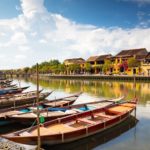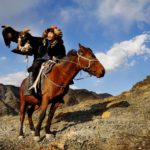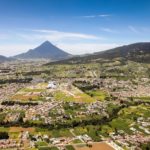Kenya is probably one of the few countries that come to your mind when you think about Africa and the country *never disappoint* you in any aspect. Abundant wildlife, thick forests, snow-capped mountains, welcoming tribes… you name it.
Kenya is a country of diverse ethnic groups and tribes – Kikuyu, Masai, Samburu, Turkana, Swahili, to name a few. This vast diversity makes Kenya famous for its handicrafts as while buying souvenirs, tourists always have plentiful options to choose from. Not only handicrafts, but the options for traditional food is also quite ample.
dont sell handicrafts on line 2 of the article.
Watching wildlife on an exciting jungle safari is certainly the main reason why you’re planning a trip to Kenya. If you’re visiting between July-August or November-December, we would strongly suggest you start your adventure witnessing Masai Mara’s great wildebeest and zebra migration. Masai Mara National Reserve is easily the top highlight in any Kenyan itinerary. Rich wildlife aside, you can explore many Masai villages around the national reserve to know more about their distinctive rituals and customs. Amboseli National Park holds another grand sight that you should definitely witness, where you can capture large herds of elephants right below the highest peak of Africa, Mt. Kilimanjaro on your camera lens. Continue your journey to the wild and reach the twin national parks of Tsavo – Tsavo East & Tsavo west. The Tsavo West National Park is the more popular among the two due to its rich lion population and diverse landscape.
Moving to the central part of the country, you will come across Mount Kenya national park. FYI, Mount Kenya is the 2nd highest mountain in Africa and is considered a sacred mountain by the Kikuyu people, the largest ethnic group in Kenya. Climbing the mountain is sure to give you a great adrenaline rush. Heading west, make sure to charge your camera to capture the majestic sight of thousands of flamingos nesting along the shores of Lake Nakuru (also a national park). Next stop Hell’s Gate National Park offers a different wildlife watching experience. Due to the rare existence of any big carnivores, walking and cycling tours are the best way to explore this park. You can walk to the nearby crater rim of Mt Longonot for some amazing views.
If you think wildlife is the only thing that you’re going to experience in Kenya, let us tell you how wrong you are! Visit Lamu Archipelago, in the south-eastern part of the country and get mesmerised by its tropical island vibes. The main island, Lamu is a relaxed little island. From the UNESCO designated Lamu Town, a medieval town with beautiful architecture to some of the loveliest beaches in Kenya, the island has a lot to offer to visitors. Swahili culture has a *deep root* in this archipelago.
Kenya’s capital, Nairobi, is East Africa’s most cosmopolitan city yet has still managed to keep its cultural life intact. The city offers great restaurants and vibrant nightlife. The nearby, Nairobi National park is the most accessible national park in the country. It offers abundant wildlife. Mombasa is another city that is known for its history. The city is a perfect mixture of Arabain, African and Indian culture.
Though English is one of their two national languages (the other one is Swahili), outside big cities, people will hardly understand the language. So learning a few Swahili words and phrases before starting your journey is always a good idea.





